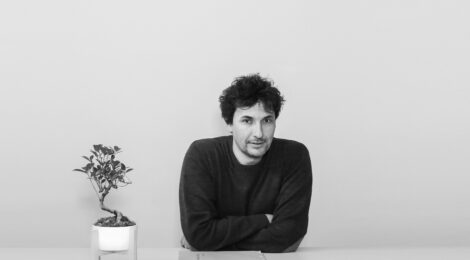
Galilei Circle of Friends – Michele Bonino and the Shougang Oxygen Factory experience
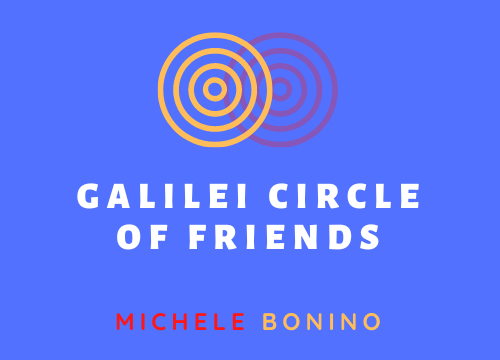
Michele Bonino, architect, is Full Professor of Architectural and Urban Planning at the Turin Polytechnic, where he is the Rector’s Delegate for Relations with China and Asian Countries. He was Visiting Professor at Qinghua University in Beijing and Visiting Scholar at the Massachusetts Institute of Technology (MIT) in Boston. With Sun Yimin of Guangzhou South University of Technology, he was Academic Curator of the 2019 Shenzhen Architecture/Urban Biennial.For the Polytechnic he coordinated the architectural design of the Visitor Center of the XXIV Olympic Winter Games (Beijing 2022, Shougang site) and curated the exhibition “China Goes Urban” at the Oriental Art Museum of Turin (with F. Governa and S. Pellecchia, 2020-21). He participated in the Venice Biennale in 2004, 2010 (Italy Pavilion) and 2021 (China Pavilion).
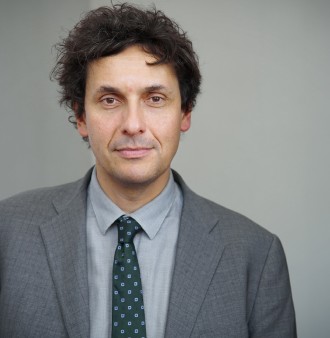
Introduction – My visit to China Room at Turin Polytechnic
Michele Bonino hosted me one autumn morning at the offices of the China Room of the Turin Polytechnic. Bonino immediately struck me by being very cordial, kind, straight to the point.
We arranged this meeting first via WeChat, through a group on decarbonisation led by Massimo Bagnasco, and then set up the interview. In the offices of the “China Room” I also met some other members of the research team, Edoardo Bruno and Camilla Forina, both involved in the beautiful project entitled “Shougang Oxygen Factory“, a real excellence and case study of the cooperation between a Italian and Chinese universities in a major Chinese and international event, such as the 2022 Beijing Olympics.
Between one cup of tea and another, the tale of “The Story of a Section” unfolded. Professor Bonino presented the project, starting from an event that certainly impressed the Chinese, the Turin 2006 Winter Olympics, and which represented a success for Italy in the world and showcase of Turin professionals and competencies.
Describing a meeting with a Chinese delegation in Turin, Bonino explained to me that what really interested the Beijing organizing committee was not so much the construction of mountain plants, but something else – the theme of industrial requalification. In fact, Turin is a city that has invested and built a lot in this area, starting from Parco Dora, to the Lingotto, and that is investing a lot, such as for example in the redevelopment of the Mirafiori site, through the construction of the Manufacturing Technology and Competence Center (MTCC, or the City of Aerospace, which will transform Turin with the aim of relaunching the city and making it a protagonist of Italian and European development again).
Following is the interview with Professor Bonino about the Oxygen Factory experience.
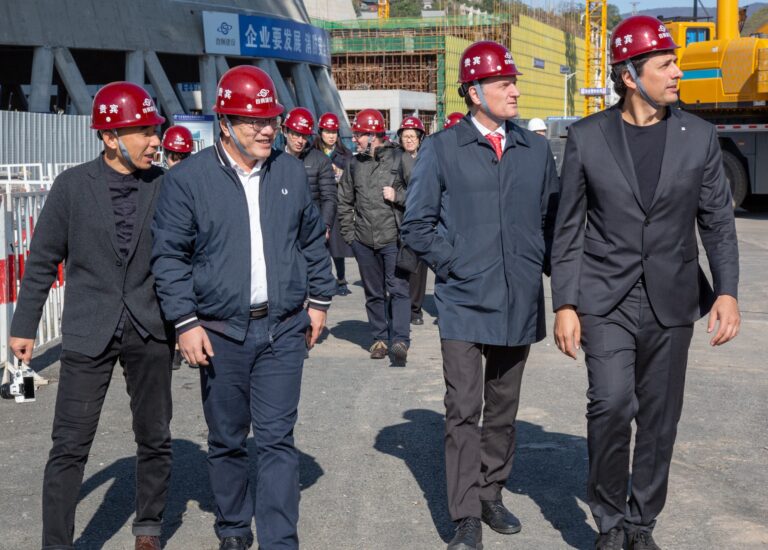
Guido Saracco, Rector of Turin Polytechnic, visiting the Shougang Olympic worksite, together with Professor Bonino and other Chinese colleagues
How did you come to be selected for the Shougang project?
The rapprochement between Turin and Beijing and the assignment of the project to our research team was the direct result of the close relationship and fruitful collaboration between Turin Polytechnic and Qinghua University. We started the process the year following the assignment of Beijing 2022, carrying out a joint study with them dedicated to the theme of “design”, the standard formula that we had also used in previous years to collaborate and which has seen, over the years, the participation of dozens of students from the two universities.
In 2016, the Rector of the Polytechnic then decided to dedicate the opening of the academic year to the decennial Olympics and to invite Qinghua to Turin, in a “three days” in which lectio magistralis were held by Qinghua professors, organized meetings and visits to Turin. On the second day, in particular, some of the actors of Turin 2006 took part, and there was great interaction and synergy between Italians and Chinese, in particular with the representatives of the Chinese Olympic Committee. On that occasion we visited important plants such as the one in Sestriere. I remember that Valentino Castellani, former Mayor of Turin, Professor of the Polytechnic and President of the Organizing Committee of the 2006 Turin Games was also present.
We thought that initially our Chinese friends would have been particularly struck by the mountainous parts, but then we realized that what they were looking at and looking for more carefully was instead the theme of industrial recovery. They were in fact extremely interested in the cases of Lingotto and Parco Dora. The latter in particular liked an industrial nave that was converted into a public park – Just think that after the assignment they continued to call our project “Shougang Dora Park” –
We have been selected to work, together with our partners in Qinghua, on the recovery of part of the Shougang steel plant. The complex is located west of Beijing, in the Shijingshan District. It is a gigantic industrial site, part of which had already been recovered in a previous phase, in which there were various structures, an artificial lake and the “Oxygen Factory”, where they treated the oxygen for the iron and steel process.
Naturally, the help of the institutions was important. The President of the Piedmont Region, Sergio Chiamparino, has sent an official letter of support to our team, there have been some institutional steps that have favored the collaboration. And then, as always with China, everything starts from one day to the next: one morning they called me and two days later I was in Beijing.
The master plan of the project was created by my colleague and dear friend Zhang Li, now dean of the architecture school of Qinghua University. We were involved in the recovery of Building A, with the aim of creating the visitor center. We therefore signed a consultancy contract with Qinghua as the Politecnico di Torino to study a preliminary up to a schematic design, to implement the building’s recovery strategies. Our work therefore developed from January to July 2018 with the aim of delivering to the final client, who was the owner of all the real estate of the Shougang steel mill, responsible for the area’s redevelopment investments, the industrial recovery strategies .
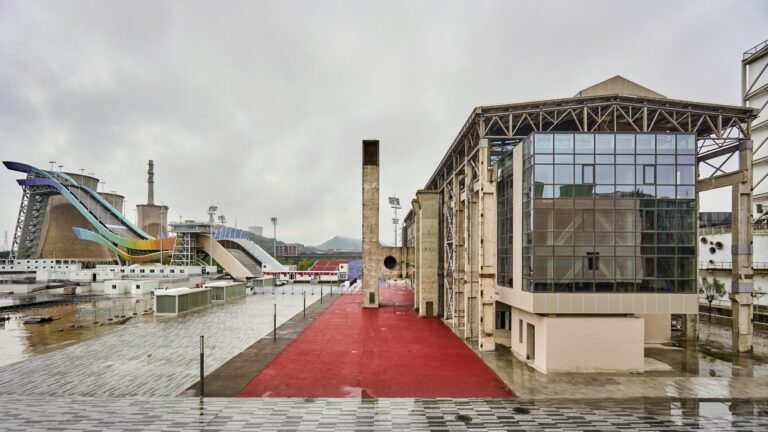
Tell me about the project: what it is, what was your goal and how you achieved it
The Oxygen Factory transformation project is part of the overall Shougang recovery master plan presented by our colleagues at Qinghua University. A former steel mill in the far west of Beijing, the area had been chosen for the location of the “Big Air” sports facility for the XXIV Beijing 2022 Olympic Winter Games. The project involved the entire Architecture and Design Department of the Polytechnic Turin for design, structural and plant consultancy, within a multidisciplinary and shared process.
The project intended to open the original building to the public visiting the Olympic site; for this reason the building was shaped according to two main considerations: to go from being an anonymous and closed volume to a public square, and to transform itself into a panoramic point on the Big Air races.
The concrete pillars with their regular rhythm, the mezzanine, the roof trusses and the tall ventilation towers have been preserved not as an industrial wreck in their own right, but as portions capable of influencing the circulation and distribution of private functions /public.
Considering these strategies, the intervention tried to answer a simple question: how to preserve the space and the image of the Oxygen Factory, while hosting a busy program of activities for the Olympic event and post-Olympic fruition?
The message that Chinese friends wanted to convey was that if in Beijing 2008 China wanted to show the world that it was present not only from a sporting point of view, in 2022 the goal was to convey a message of confidence through the idea of industrial recovery and the issue of sustainability. With ups and downs, and after some initial controversy, the message got across with clarity.
From a media point of view, our project was facilitated by the fact that the building was located very close to the slope and the snowboarding hill. A new sport, in which China has achieved extraordinary results, especially with the young promise Eileen Gu. The Big Air athletes had industrial chimneys behind them, unique to the Winter Olympics. Our work has been relaunched in this way by many newspapers.

What was the key to being able to get involved and be able to work on the project?
Definitely the successful and long-lasting cooperation with Qinghua. The way we have been working with them for years was the reason why the Polytechnic of Turin was the only foreign entity to collaborate in the planning part of the Olympics. Over the years we have worked as a single team: when we visited Beijing we worked in their studio, we were a coordinated and well-matched team.
Our “China Room” does not have the approach to the Chinese market as an export of skills that are given to third parties and that’s it, but it is the creation of partnerships to develop projects together. The same thing happened in other collaborations in China: even in Guangzhou, a city where we have a collaboration with the South China University, we work well together and in synchrony.
The partnership with Qinghua helped us in this project because the building was a complex element, and other variables were also involved: knowledge of the places, Chinese regulations, and responsibilities that in Italy are not usually entrusted to a research team university.
From the point of view of architectural paternity and design freedom, our Chinese colleagues have left us very free to express ourselves and create. However, our project was part of a master plan designed by them: from the executive project onwards, the project then passed to Qinghua and was carried out by their engineers and professionals. Our consultancy was not simply sent to China, but integrated into the Chinese architectural project and translated into technical language with the help of our colleagues. In the end we found a compromise between what was asked of us, inspired by the Parco Dora in Turin, and what we as a team thought we could achieve.
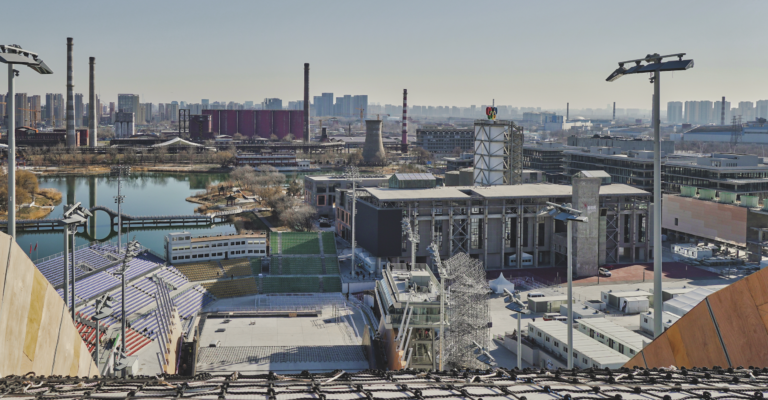
What were the main challenges you experienced and what did you learn from Shougang’s project?
Once we received the assignment, we asked ourselves – and now how do we do it? – We are a research team doing project consultancy, and it was the first time we went to work on such an important structure of a Chinese site. It was complex due to the size of the project itself and its typology, because usually in Italy it is not part of a teacher’s mandate.
A challenge was also related to the greater freedom that we had been granted, because in our past experiences we had more stringent limits. The key to obtaining a concrete result was to reinvent ourselves with operating methods, while the collaboration with Qinghua and the quality relationships that we have been able to build over the years with them have been fundamental. The experience we have accumulated with Shougang we have certainly put into practice in subsequent experiences with China, and it has been truly useful and profitable.
In relation to China, we have learned that it is important not to present oneself as a supplier of services or as people who bring a one-way contribution, but really to merge in a totally one-to-one collaboration. In Beijing we were no longer seen only as foreigners who work as consultants and then leave, but we were strongly integrated, and this was the reason why we were able to successfully conclude the project.
If this experience convinced us even more of the importance of trust, we then learned to refine our communication with Chinese friends even better. To obtain results, we have learned to highlight certain aspects of the work, order them in a certain way, all to facilitate mutual understanding. I can say that we have found a “third way” of communication, halfway between Chinese and Italian/English, using some precautions, through small notes, WeChat conversations, many drawings made together.

What were the positive outcomes in the following years?
In 2021 Zhang Li could not travel to Italy to curate the national pavilion of the People’s Republic at the Venice Architecture Biennale and asked our team to be their representatives in the set-up phase. Once her project arrived in Italy, we put it on display, as did our Chinese colleagues in China when they received our projects.
In general, the Shougang project has brought us great visibility in China and new research and job opportunities. What we are missing is now being able to return to China and work face-to-face with our Chinese colleagues, to develop synergies and also to have more fun.
Interview by Marco Bonaglia
Please share:



